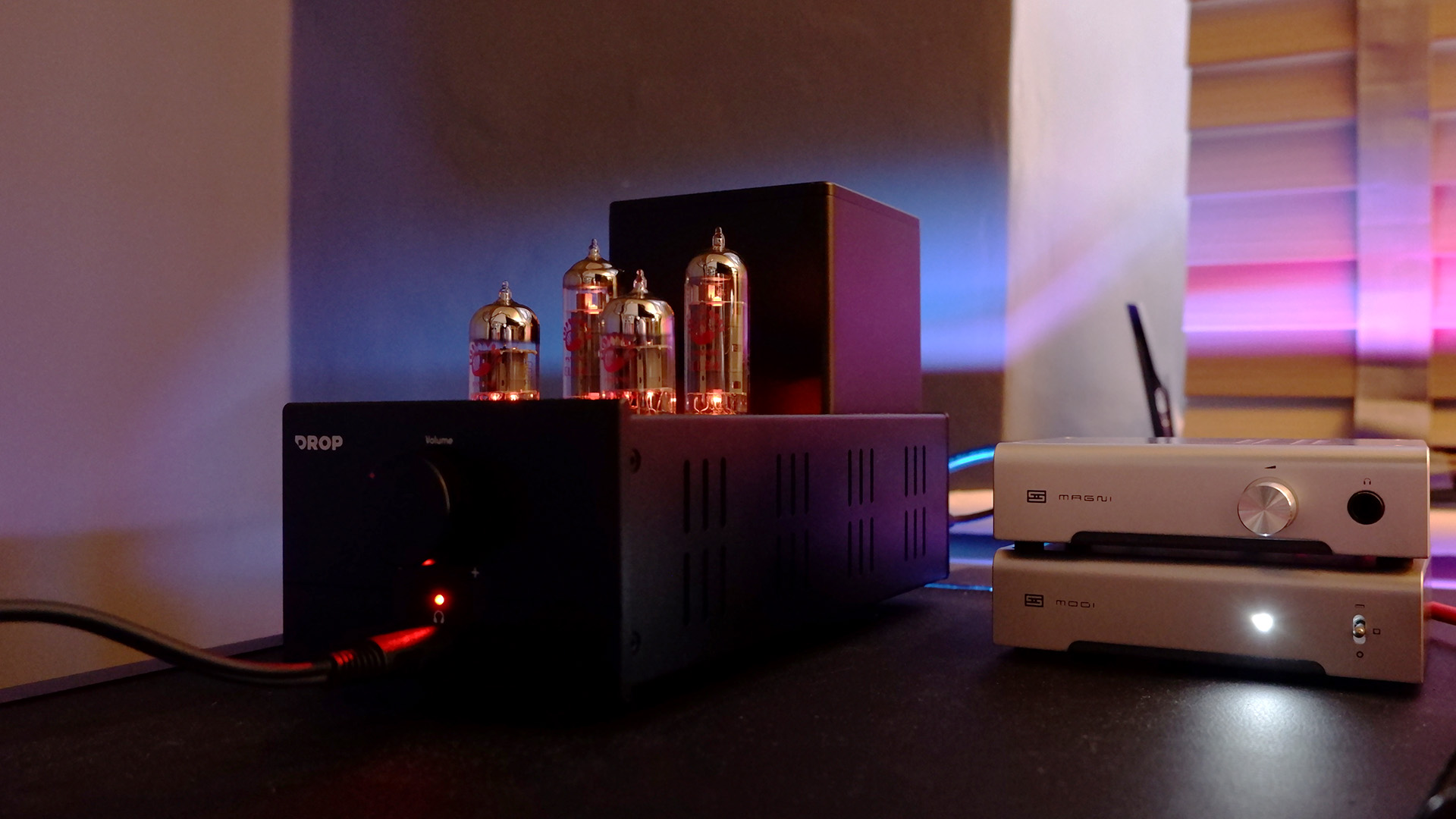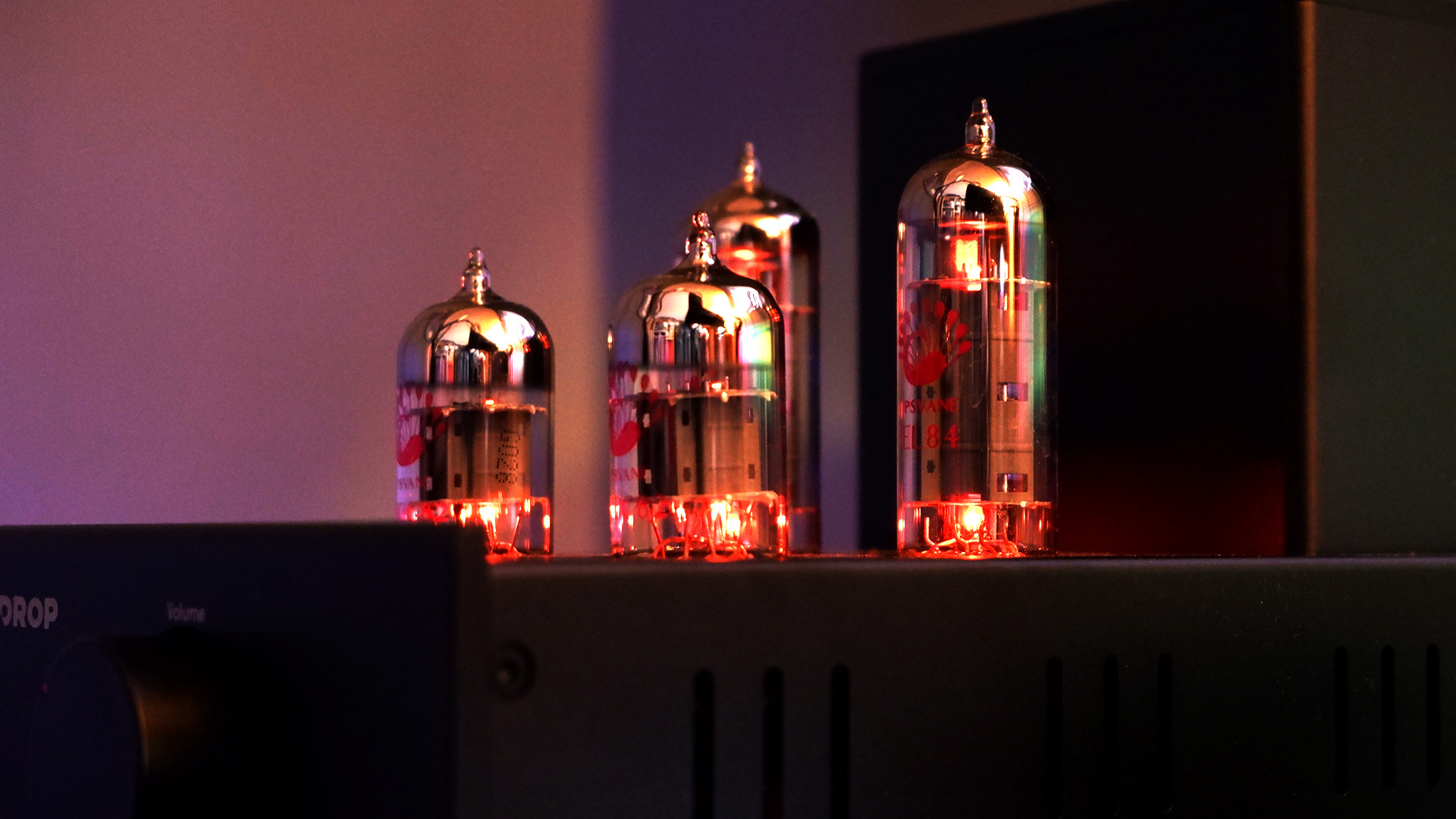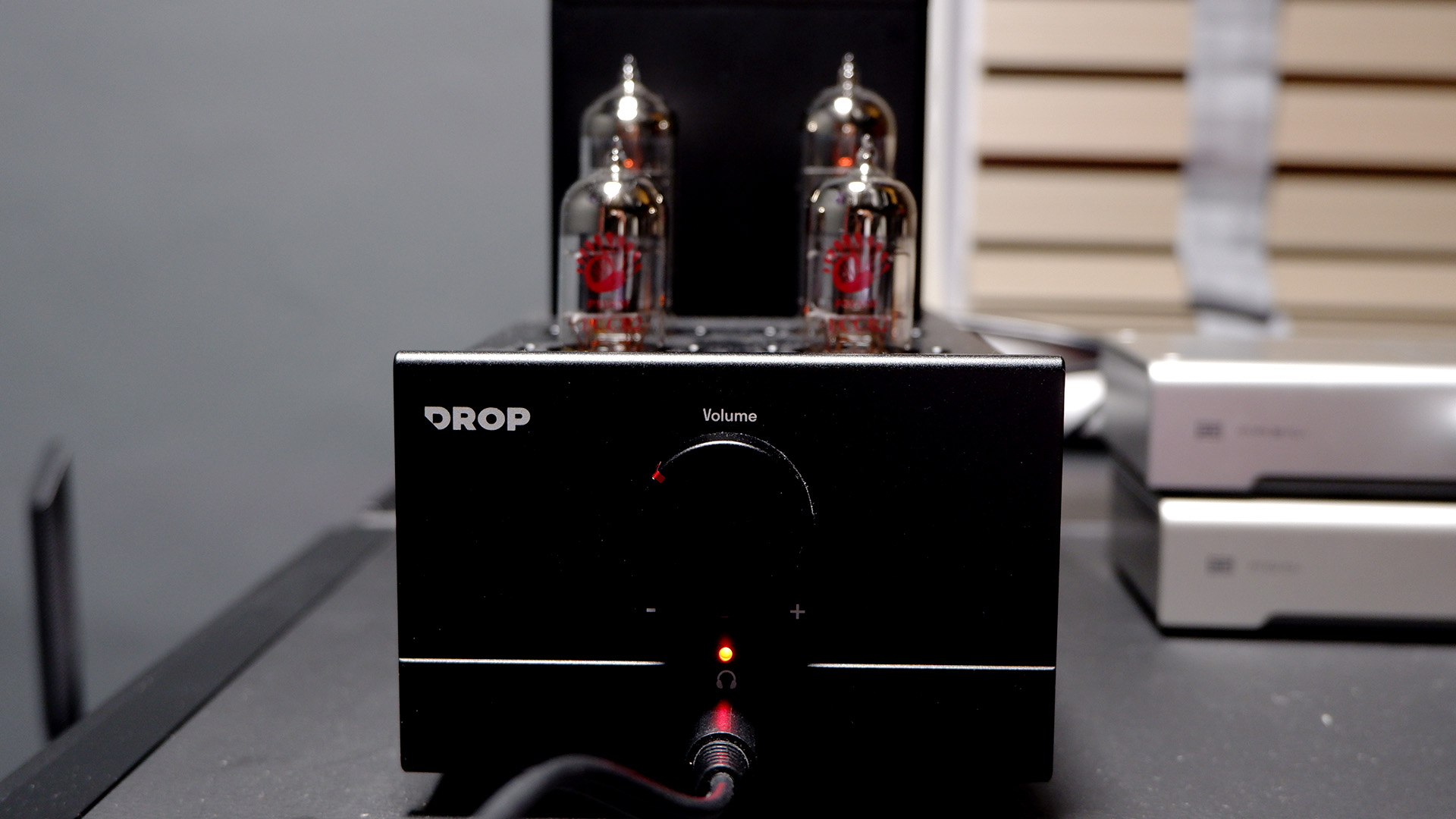Our Verdict
A simple solution for audio lovers, this Drop + Xduoo DAC and amp combo differentiates itself from the rest thanks to the sweet sound of tubes.
For
- Gorgeous tone
- Tough metal build
- Good value for tubes
Against
- Bulky
- Solid-state can sound cleaner
- Dust magnet
PC Gamer's got your back
If you're looking for a way to further elevate your PC gaming setup, a high-end audio system is a wonderful way to do it. Take this DAC/amp from Drop and Xduoo. Not only does it deliver detailed and vibrant audio to your ears, it also scratches the aesthetic itch thanks to four gloriously glowing tubes.
The Drop + Xduoo TA-84 OTL Tube Amp/DAC is a bit of a mouthful, so let's break down what this $349 device actually does.
First off, it's a digital to analogue converter (DAC). That means you can connect this device to your PC and entirely bypass your internal DAC, which will be located on your motherboard and somewhat subject to electrical interference from it. To be honest, motherboards are a lot better for audio quality nowadays, but by taking the DAC out and into its own metal box on the TA-84, you don't have to worry about interference one bit. In terms of the exact DAC chip used on this device, it's the ES9018K2M, which offers a plentiful bit depth/sample rate of up to 32-bit/384 kHz. For everyday use on the desktop, that's overkill.
Onto the more exciting bit: the amp and pre-amp. These take your weak heart analogue audio signal and give it a much needed boost up to acceptable levels. In the TA-84, the job of doing this falls on two sets of two tubes. The first set, the smaller ones, are the ECC-82 pre amplification stage tubes. Then you've got the EL-84 power amplification stage tubes.

Inputs: RCA, USB Type-C
Outputs: 6.35mm (1/4-inch) jack, RCA (preamp)
Tubes: 2x EL-84 (power), 2x ECC-82 (pre)
Output power: 44 mW (at 100 ohms), 83 mW (at 300 ohms), 93 mW (at 600 ohms)
DAC: ES9018K2M
Sampling rate: PCM 16-bit – 32-bit / 44.1 kHz – 384 kHz
Price: $349 ($399 full price, though sale price appears persistent)
So, why tubes? The tube has largely given way to the transistor for most audio applications these days. That's been true ever since the introduction of the transistor radio. Going back to tubes may then appear a big leap backwards. Yet there's something about a tube profile that I can't get enough of.
Cue the nebulous terms used to try and describe audio: there is a softness throughout the range when listening to a FLAC file over the TA-84. It's a little more easy-going than the solid state Schiit Magni/Modi combo I'm used to. Less punchy, warmer. Through both the classical and heavier, more distorted albums I listened to, it's a consistently gorgeous tone.
The changes are subtle, however. And I mean you really have to listen out for the tiny tweaks or differences. If it wasn't for having a similarly priced solid state amp/DAC to hand and being able to playback the same tracks on either, I would be hard pressed to pinpoint much difference between the TA-84 and the Schiit. That said, I have found myself gravitating towards the TA-84 day-to-day, as there's something about the warmer character that plays nicely with my pair of Sennheiser HD 650.


✅ You have a pair of Sennheiser headphones: If you own a pair of HD 650, HD 6XX, or a similar headset design, this amp/DAC combo is the sweet spot for audio bliss.
❌ You already own a great solid-state amp: If you're already rocking a sensible amplifier and DAC for your headphone setup, you probably won't get enough out of swapping to a tube setup such as this to make the extra cash spent worthwhile.
This is the case for gaming as much as it is music. Both systems I'm using sound great in Avatar: Frontiers of Pandora or Baldur's Gate 3. There's even something to be gained in more competitive titles; the definition and clarity that this sort of setup can deliver, most of all in the high-end (depending on your headphones), does help differentiate audio cues. That said, you have to be into high-end audio for listening to music most of all. You can find a lot cheaper headphones that are great for gaming, and on top of the cost of the headphones/DAC/amp, you will also have to sort out your own microphone with this sort of high-end setup.
This is an OTL amp, which means it lacks transformers on the output (OTL stands for OutputTransformerless). Drop claims it helps reduce distortion that can be a factor with tubes, though I feel you could easily get into the weeds with the terminology here or in trying to compare this to other designs that may behave equally well, if a little differently. The key thing is for use with a pair of solid, high-impedance headphones, such as the Sennheiser I'm using, distortion isn't a major factor.
You can crank up the volume with the HD 650s with this amp and there's a Hi/Lo gain switch on the back to thwack on another +16 dB if required. There's a USB Type-C connection for your PC, RCA for the Aux In and Pre Out (if you use it as a pre-amp), and an all-important voltage switch. This lets you switch between 110V and 220V, depending on your region, so make sure to set this correctly before you plug it in. Otherwise, you need only hook it up to your PC via USB and plug in your headphones and you're away.
With playback quality to match my go-to high-res audio setup, you may call my vain, but, a big sell of the TA-84 is its appearance. You have to be vain enough to want four hot tubes poking out of a box on the end of your desk at all times. And trust me, these do emit some heat. Though I do, and the TA-84 a lot more exciting to me than another metal box plonked on my desktop.
A simple solution for audio lovers, this Drop + Xduoo DAC and amp combo differentiates itself from the rest thanks to the sweet sound of tubes.

Jacob earned his first byline writing for his own tech blog. From there, he graduated to professionally breaking things as hardware writer at PCGamesN, and would go on to run the team as hardware editor. He joined PC Gamer's top staff as senior hardware editor before becoming managing editor of the hardware team, and you'll now find him reporting on the latest developments in the technology and gaming industries and testing the newest PC components.


